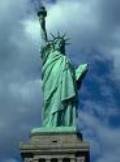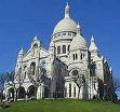
 |
 |
 |
 |
Landmarks Reviews
The White House
The White House
Sixteen - hundred Pennsylvania Accession is among the most famous addresses in the United States. The 132 - room home and workplace has also been known as the “President’s House” and the “Executive Mansion”, but since 1902 it’s officially been called the White House.
When George Washington was President, jurisdiction meetings were held in legion cities. He and Martha Washington kept two homes in New York and one in Pennsylvania. Seeing the need for a federal city, the President and Congress agreed in 1790 to the Residence Act. This provided for a district “not exceeding ten miles square…on the river Potomac”. The new federal city would be designed by Pierre L'Enfant, and the city planner would hold a blueprints contest for the President’s house.
James Hoban, an Irishman living in South Carolina, won the competition with a classic Georgian design. ( Thomas Jefferson was further among the entrants; he competed beneath a pseudonym. ) Hoban based the building on a duke’s palace power Ireland.
Two states, Maryland and Virginia, ceded land for the new federal district. Both were slaveholding states, and slaves broke ground for the home. The work was completed by European immigrants. The ultramodern house wasn’t built in time for the Washingtons to move in; John and Abigail Adams were the first to take reinforcing house in 1800.
The building has undergone countless changes since the senescence of John and Abigail Adams. Interior redecorating and structural changes started with the next resident President, Thomas Jefferson. He ordered French furniture and French wallpaper, and he added space outdoors to conceal stables and storage. Other Presidents would beget even larger additions: Theodore Roosevelt - - who had six children and required more space – contributed the West Wing; and FDR added the East Wing during World War II to conceal construction of an underground bunker.
Each Administration’s time at the White House brought foremost new, but here are some of the wider notable changes:
* British soldiers burnt the building in 1814 during James Madison’s presidency. Most of the home and its contents were dejected by fire. A thunderstorm saved outside walls, and Dolley Madison rescued a famous portrait of George Washington. The architect James Hoban was available for renovations.
* The White House essential an hulking washing after 20, 000 muddy partiers celebrated Andrew Jackson’s inauguration. Jackson soon installed running water. He also planted magnolia trees and false plans for later landscaping.
* James Garfield installed the first elevator.
* Harry Truman extensively renovated the whole house and added a second porch. He also added basements for wartime safety.
* The White House was made more wheelchair - accessible during FDR’s service. A pool was also added in consideration of his physical challenges.
* Richard Nixon cemented through the FDR pool to create a Press Briefing Room.
* Jacquelyn Kennedy directed the most extensive and historically accurate White House restoration. She also planted a flower garden.
* Rosalynn Carter contributed an “Office of the First Lady. ”
Today the White House Complex consists of six stories and 55, 000 square feet of space. The Executive Residence spans several floors. Two basement levels also provide storage, service areas, and a stereotyped shelter for the President’s family. The West Wing holds executive offices including the Oval Office, the Cabinet Room, and the Locale Room. The East Wing is down home to offices for the First Lady, White House correspondence staff, and other White House staff members.
Some of the interior is visible to the public, but tours charge be pre - arranged by a member of Congress. Visitors might tour the State Macadamize, where several rooms are simply named by color: the Developing Room, Red Room, and Blue Room. The Green Room is named for the moss green silk that lines its walls. It’s used for informal meetings and photo opportunities with foreign political leaders. Famous Green Room paintings depict Benjamin Franklin, John Quincy Adams, and Abigail Adams. The Red Room is decorated like an early - 1800s parlor with a marble mantel. The Blue Room is the White House’s most formal setting. It’s shaped like an oval and is furnished with gilded furniture. This is where the White House Christmas tree is traditionally placed. Visitors might also see the Map Room, the State Dining Room, or the famous Lincoln Bedroom.
 |
 |
 |
Democracy And Tasty Treats At Faneuil Hall
The Crazy Horse Monument And Memorial
Mischief And Stunts At Niagara Falls
Construction Of The Golden Gate Bridge
Elvis Presley And The Graceland Estate
Dietary Supplements Information
Vegetarian Cooking Information
Vitamins And Supplements Information
Health And Fitness Information
More Landmarks Reviews
Democracy And Tasty Treats At Faneuil Hall
... grasshopper became so well - avowed to northerners that when someone suspected a spy during the Revolution, they d ask, What sits atop Faneuil Hall? Those who didn t know were deemed likely British agents. Today s Faneuil Hall Market refers to a group of four buildings: Faneuil Hall, Quincy Market, North ...
... a geological survey to the rock. It was Dodge who named Devils Tower; he thought that natives called material " Bad God's Tower ". Congress designated the area a US forest reserve in 1892, and by 1906 it was the country's first national monument. In addition to the tower, the park includes the Belle Fourche ...
Olvera Street A Taste Of Old Mexico
... and they fill the site due to celebrations like Cinco de Mayo and D a de los Muertos. The Olvera plaza also features cultural performances throughout the year. The street began as part of a town built by settlers in 1781. Spain s King Carlos III ordered his Lieutenant Governor of California, Don Fernando ...
... Plymouth s enter keeper for many decades. Still, his father had not been among the original Plymouth settlers; he d arrived three years later in 1623 and heard the Plymouth Rock story from others. Nevertheless, people accepted Faunce s story and the identified rock took on great patriotic significance. ...

|
| Copyright © 2006-2012 Internet Marketing Tools, All Rights Reserved |